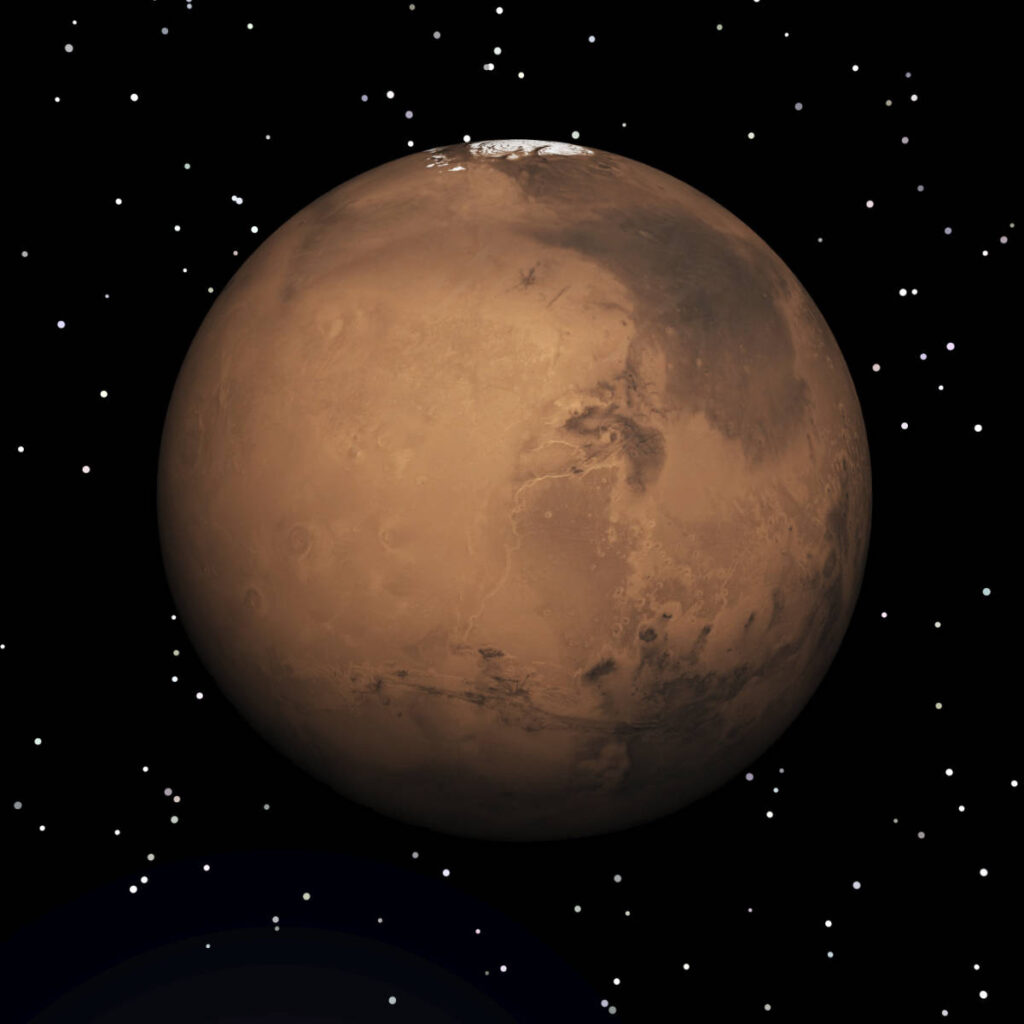Last Reviewed and Updated on June 14, 2022
Mars is the fourth planet from the Sun and it is one of the most amazing planets in our solar system. From fascinating geographical features and atmospheric conditions all the way to its two little moons, there are a lot of cool facts about Mars you may not yet know.

1. Mars was named after the Roman god of War
A fitting name for the red planet. Ancient Romans took note of the planet’s reddish color, and the color was associated with blood.
2. The tallest mountain in the Solar System is on Mars
This is one of the coolest facts about Mars! Olympus Mons is currently the tallest known mountain in our Solar System. It’s the largest volcano on Mars, with its height measured at 13.6 miles (71,808 feet) / 21.9 km. Mount Everest, the tallest mountain on Earth, fades in comparison as it only reaches the height of 29,031.69 feet / 8,848.86 meters.
3. Mars has two moons and they are amongst the smallest in our Solar System
Mars has two natural satellites in its orbit. Phobos is the largest of the two. Deimos is the smaller one.
Phobos, the largest of the two, has a diameter that is more than a hundred times smaller than that of the Earth’s moon. Deimos is just a bit more than half the size of Phobos.
The moons of Mars are one of the smallest moons in our Solar System.
4. A day on Mars is almost as long as a day on Earth
A (sidereal) day on Earth lasts about 23 hours and 56 minutes. This is how much time Earth needs for one complete rotation around its axis.
A solar day on Earth is 24 hours, and it’s slightly different than just looking at the rotation. A solar day is the amount of time needed for Earth to rotate around its axis to a point where the sun appears in the same position in the sky as at the start of the rotation. It is based on the position of the Sun in the sky.
It takes Mars 24 hours and 37 minutes to rotate around its axis and its solar day is about 2 minutes longer.
5. There are dust storms on Mars, and they can cover large areas
Moderately big sand storms are common, happening multiple times per year on Mars. Even if they are considered moderate by Mars standards, the size of these compares to continents on Earth.
But the storms can get even more massive. Every couple of years a massive storm can form and it can cover most of the planet. In fact, in 2018, a storm on Mars was recorded that circled the entire planet.
These storms can last anywhere from a few days to several weeks.
6. The atmosphere of Mars has a similar composition as the atmosphere of Venus
Both Venus and Mars have atmospheres consisting primarily of carbon dioxide. Venus has 96.5% carbon dioxide and Mars has 96%. Venus has around 3.5% nitrogen and Mars has 1.93%. The only big difference is in argon, which represents 1.93% of Mars’ atmosphere.
The atmosphere on Venus is a lot thicker than the atmosphere on Mars.
7. Like Earth, Mars has auroras
Auroras are naturally occurring lights in the sky, most commonly seen in high latitude regions (around the poles) on Earth. Auroras have been observed on Mars as well, but unlike Earth, they aren’t concentrated at the poles. This is one of the more fascinating facts about Mars.
8. There is water on Mars
It mostly exists as ice, with small quantities as vapor in the atmosphere. The ice is visible on the north pole.
9. You can see Mars without a telescope
Mars is one of the five planets you can see without a telescope. When the planet is close to Earth it is easily recognizable in the night sky as it shines with a bright, slightly reddish glow.
10. It is a terrestrial planet, just like Earth
A terrestrial planet is a planet consisting mostly of rocks or metals.
